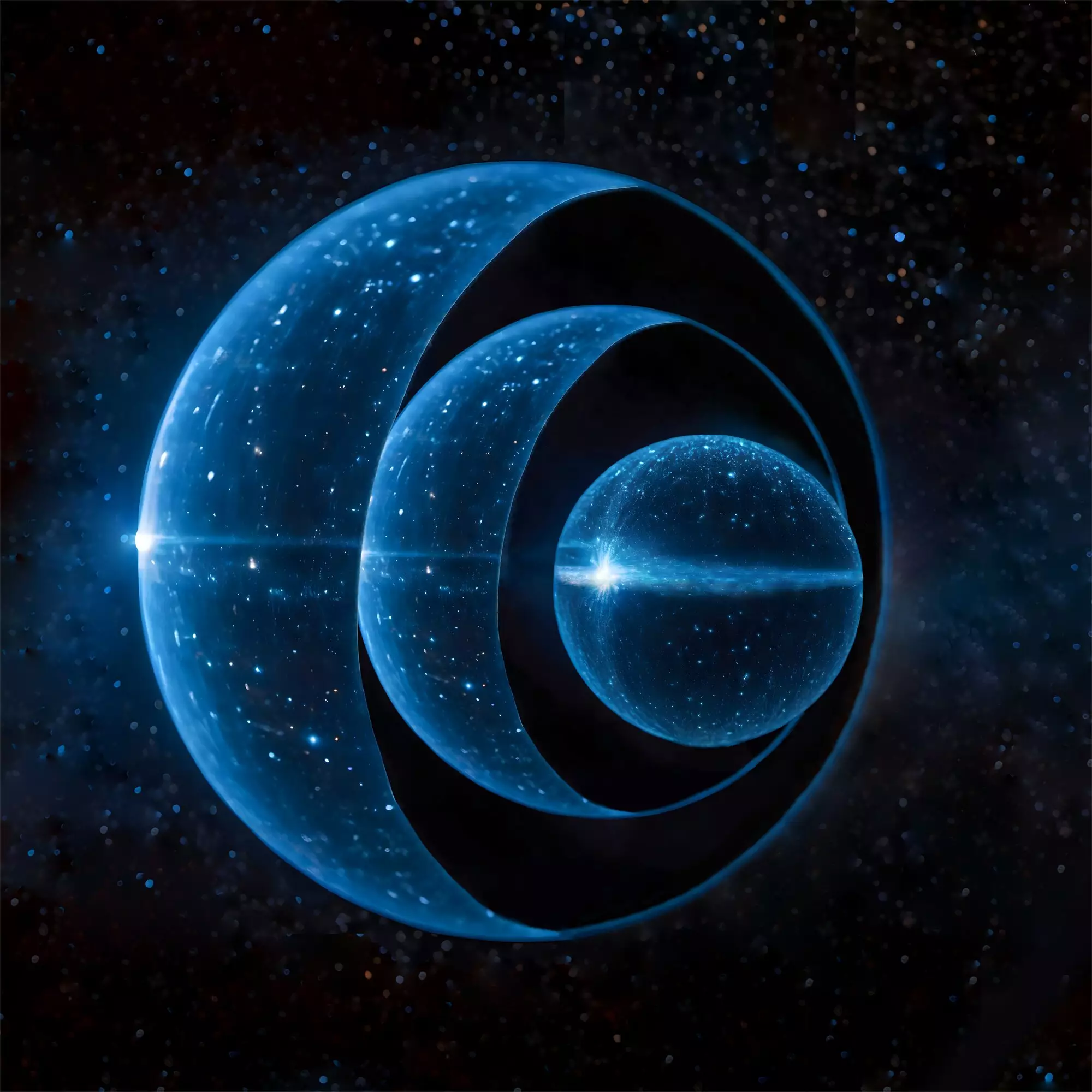The interior of black holes remains an enigma, challenging the boundaries of our scientific understanding. The concept of a singularity, where space and time cease to exist, proposed by physicist Karl Schwarzschild in 1916, seems to defy the laws of physics as we know them. This conundrum has hindered the exploration of black holes until recent breakthroughs, such as the discovery of the black hole at the center of our Milky Way and the first-ever image of a black hole captured by the Event Horizon Telescope Collaboration in 2019. In contrast, gravastars, proposed by Pawel Mazur and Emil Mottola in 2001, offer theoretical advantages over black holes. This article delves into the intriguing concept of a “nestar,” a gravastar within another gravastar, uncovered by theoretical physicists Daniel Jampolski and Luciano Rezzolla of Goethe University Frankfurt.
While black holes possess a singularity and an event horizon, gravastars provide a more feasible theoretical perspective for astrophysics. Gravastars closely match black holes in terms of compactness and surface gravity, making them practically indistinguishable from black holes. However, gravastars do not possess an event horizon and lack a central singularity. Instead, their core comprises an exotic form of dark energy that counteracts the immense gravitational forces. The outer layer of a gravastar is a thin skin of ordinary matter that approaches infinitesimal thickness. Mazur and Mottola introduced the idea of gravastars as an alternative cosmic entity to black holes, sparking new possibilities for understanding the mysterious phenomena in our universe.
The search for innovative solutions to Einstein’s field equations continues to yield surprising results even a century after Schwarzschild’s initial groundbreaking proposal. Daniel Jampolski, under the supervision of Luciano Rezzolla, discovered a novel solution during his Bachelor’s thesis: a gravastar within a gravastar, aptly named the “nestar.” This hypothetical celestial object resembles a matryoshka doll, with each nested gravastar encapsulated within another. While Mazur and Mottola’s gravastar model features an infinitesimally thin shell of normal matter, the nestar’s shell exhibits a slightly thicker composition, enhancing our ability to imagine its existence.
Jampolski and Rezzolla’s discovery of the nestar offers a tantalizing glimpse into the complexity of cosmic structures and challenges our preconceived notions of black holes. With the existence of nested gravastars, the possibilities for understanding the nature of compact celestial objects expand further. This discovery illustrates that even after a century of exploration, new solutions to Einstein’s field equations within the realm of general relativity can still emerge, broadening our horizons and sparking scientific curiosity.
Luciano Rezzolla emphasizes the significance of finding new solutions to Einstein’s field equations, comparing it to the chance discovery of a gold coin along a well-trodden path. The continuous evolution of our understanding of gravastars and the introduction of the nestar concept highlight the intricacy and richness of the universe’s mysteries that await our exploration. However, despite these remarkable discoveries, the process of creating a gravastar, let alone a nestar, remains an unsolved mystery. Scientific research in this field aims to shed light on the origin and formation of these fascinating celestial entities.
The enigmatic world of black holes has captivated scientists and researchers for decades. However, the emergence of gravastars as a theoretical alternative to black holes has opened up new avenues of exploration. Within this context, the discovery of the nestar by Jampolski and Rezzolla represents a significant step forward in understanding the complex nature of celestial bodies. The revelation of gravastars nested within one another challenges our conventional understanding of black holes and offers fresh perspectives for future scientific investigations. As we continue to push the boundaries of knowledge, the mysterious world of gravastars beckons us with its uncharted territory, inspiring scientists to unravel the secrets of the universe, one celestial object at a time.


Leave a Reply